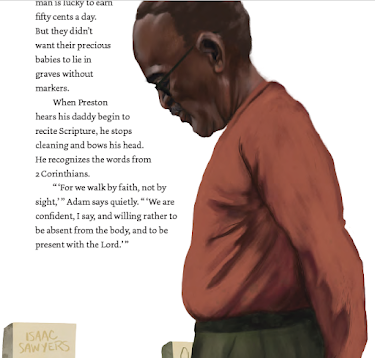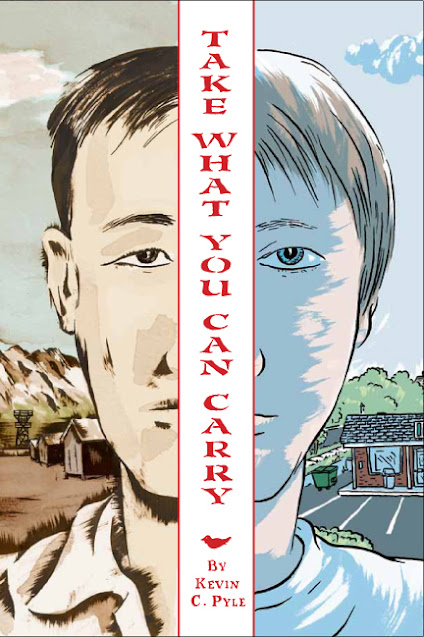It is my pleasure to introduce Bountiful Red Acres by my North Carolina friend, Eileen Heyes. Written for third-eighth graders, it details a year in the life of two families one Black and one White in Surry County, as they move from season to season in 1900. The book is beautifully illustrated by Dare Coulter and is a welcome North Carolina resource published in 2023. All illustrations are used with permission of the NC Department of Natural and Cultural Resources.
This is the story of an ordinary year in the lives of two ordinary families, raising crops, rearing children, building community. (p.5)
INTRODUCTIONS
The book opens with touching introductions by descendants of both the Sawyers and Hauser families. Mary Hauser and Janie Hauser Morgan wrote: "Reading about the Sawyerses and Hausers as neighbors and community members brings beautiful new texture to the lives we imagined when we visited Shoals and depth to our understanding of North Carolina's Piedmont...lives are both deeply intertwined yet separate, bound by the rhythms of the same seasons, and also made starkly different by the legacy of slavery."
REVIEW
Winter
SPRING
 |
 |
Mr. Sawyers at the cemetery. |
Summer
The sidebar for Summer is about the once-every-decade census. Nathanael Boydon visited all the families in Shoals and often stayed for dinner. When he didn't get around to visit every family, he filled in the forms anyway. No one bothered to correct him.
The sidebar from Fall talks about common modes of transportation. Although Thomas Hauser owned a surrey, most folks got around by walking.
INTERVIEW
CAROL: How did you end up writing this book? Did you approach the NC Department of Natural and Cultural Resources with the idea or did they come to you? Did they set the parameters of the book?
EILEEN: The book that became Bountiful Red Acres had a kind of complicated, twisty history. I'll spare you several years of backstory on that. I was hired to write the story on recommendation from my dear friend, author-illustrator Anne Runyon. By that time the folks at DNCR had decided what they wanted was a book about the Sawyers and Hauser families, who lived on what is now a State Historic Site called Horne Creek Living Historical Farm. It's a beautiful site, in Surry County, south of Pilot Mountain State Park.
The only parameters my editors gave me were that my story should have a narrative structure and a child's point of view. Then, in consultation with the site manager at the farm, Lisa Turney, I settled on telling the story of the year 1900 from the POVs of 10-year-old Preston Sawyers and 12-year-old Robert Hauser -- perfect ages for a book aimed at 4th-grade readers.
CAROL: Since its publication, have you heard if teachers are using it in classrooms? Perhaps as part of NC studies?
EILEEN: I know of at least one teacher who plans on using it in her classroom at Durham's R.N. Harris Elementary. Also, Rodney Dawson, an Education and interpretation Specialist with the N.C. African American Heritage Commission has been promoting my book as a resource for teachers. And I've been delighted to see the Sawyers and Hauser descendants embracing my book. One Hauser descendant bought copies to donate to all the schools in Surry County, plus more to distribute among his family members.
What I hope students and teachers will get out of this book is a glimpse of the "missing middle" in our history. When we study history, we tend to focus on heroes and achievers, or we study conflicts and victims. But we give a lot less attention to ordinary people and how they lived, how they kept moving through every day, year after year and kept the world turning. This is who the Sawyerses and Hausers were -- a Black family and a white family who had adjacent farms in a time when law and custom kept Blacks and whites apart in many aspects of life. Here in their ordinary farming community of Shoals, the Sawyerses and Hausers were friends. Despite the pervasive racial and economic inequalities, these two families farmed successfully, they made sure their children got an education, they lived with dignity and they just plain carried on.
CAROL: Please speak about the research process. What was fun and joyful, what was difficult (and maybe?) depressing or discouraging? How long did you research before you started writing?
EILEEN: Research for this project was easier than for most nonfiction because most of what I needed was in the files at Horne Creek Farm. Back in the 1980s and '90s, when the farm was being prepared as a State Historic Site, other researchers had searched out the histories of the community, the property, and the two families. Site Manager Lisa Turney was my guide through those existing resources. Another really helpful source was a newspaper called The Progressive Farmer out of Winston, N.C., which is digitized in the Library of Congress's "Chronicling America" collection. Great online resource for anyone wanting to re-create American history!
The research, outlining, drafting, and writing unfolded over several years, for a variety of reasons. It was an unusually leisurely project.
The most fun part for me was visiting the farm, which of course I had to do in each season to portray the changing sights, sounds, and fragrances of the farm in the course of a year. Spending time on site helped me sort through the mountain of information and pick out the details I wanted to use, the specific facts that would bring the story to life for young readers. I set out to hit a target length of 4,000-6,000 words but ended up at more like 7,600 words because there were just so darn many interesting details to include -- and my editors agreed, it all needed to be there.
I'd also like to say, I love the way artist Dare Coulter brought her own insights to the story. As you know, an author has no input on how a book is illustrated. I had seen Dare's work and was thrilled to learn that she would be on the project. Sure enough, her art added a whole different dimension to the story. And big credit to Sheilah Barrett Carroll, the book's designer and editor, who pulled everything together into a cohesive whole. I am grateful for the privilege of working with both of these talented women!
GIVEAWAY






































